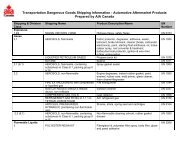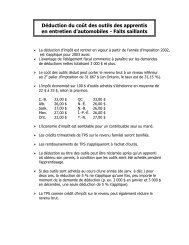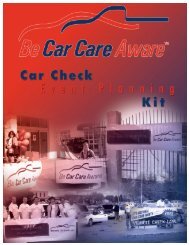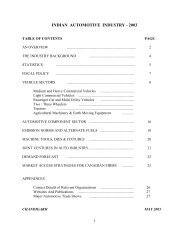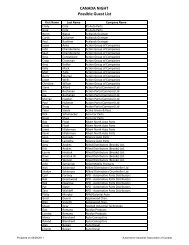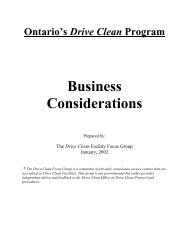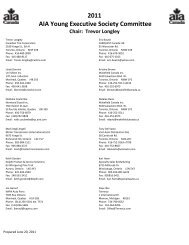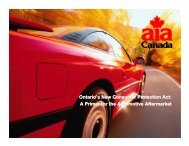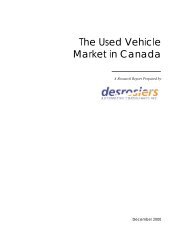Euro 5 Impact Assessment - Automotive Industries Association of ...
Euro 5 Impact Assessment - Automotive Industries Association of ...
Euro 5 Impact Assessment - Automotive Industries Association of ...
You also want an ePaper? Increase the reach of your titles
YUMPU automatically turns print PDFs into web optimized ePapers that Google loves.
6. IDENTIFICATION OF THE BEST SCENARIO UNDER THE REGULATORY OPTIONIn this section, different scenarios under the regulatory option are compared, wherepossible, based on a quantification <strong>of</strong> their impacts. When comparing the scenarios, thefollowing elements should be taken into account:• recent scientific research has provided evidence that PM has a significantly greaternegative impact on health and environment than NOx;• different levels <strong>of</strong> increase in the price <strong>of</strong> diesel and petrol cars might imply a shift inconsumer demand from one fuel type vehicle to another.6.1. Data Collection and Modelling <strong>of</strong> the <strong>Impact</strong>sThe <strong>Euro</strong> 5 proposal was developed at the same time as the Commission’s thematicstrategy for air pollution (CAFE Programme). Stakeholders were actively engaged in thediscussion <strong>of</strong> this programme.In the preparation for a new set <strong>of</strong> limit values for light-duty vehicles, the Commissionservices sent out a questionnaire to stakeholders that requested information on thetechnologies needed and the associated costs for meeting a number <strong>of</strong> different scenariosfor possible <strong>Euro</strong> 5 limit values. The responses received from the stakeholders were thenprovided to a panel <strong>of</strong> three independent experts for validation. Some further discussionwas held between the panel and the stakeholders in order to clarify outstanding issues andto generate additional information. The panel subsequently reported on its interpretation<strong>of</strong> the stakeholder responses in terms <strong>of</strong> the technologies required and the costs involved.The data summarised by the panel was used as input for the modelling <strong>of</strong> the impacts <strong>of</strong>different scenarios.6.2. Scenarios <strong>of</strong> the Regulatory approachA number <strong>of</strong> scenarios, combining different levels <strong>of</strong> PM, NOx and HC emissions havebeen developed for policy option 2 (Regulatory approach).6.2.1. Evaluation <strong>of</strong> Scenarios for Diesel VehiclesThe cost implications for the various scenarios examined as part <strong>of</strong> this proposal are setout in Table 1. This summarises the average cost per vehicle for each diesel scenario,weighted according to the projected composition <strong>of</strong> the new vehicle fleet in 2010. Thesefigures have been deflated by a 4% discount rate so that they are provided as 2005 costs.In addition, a deflation was made to the costs <strong>of</strong> the diesel scenarios, as the expert panelwas <strong>of</strong> the opinion that the costs provided by stakeholders had failed to account for theeconomies <strong>of</strong> scale that would result through the mass production <strong>of</strong> new technologiesthat would be used in diesel cars in the foreseeable future.These figures demonstrate that all the scenarios entail higher costs for diesel vehicles.With diesel vehicles it is projected by the expert panel who reviewed the cost data that alarge proportion <strong>of</strong> the cost relates to the increased specification <strong>of</strong> particulate filters. Theother key variable is the need to specify additional internal engine measures or aftertreatmentto reduce NO x emissions. The highest cost scenarios relate to those with the16



